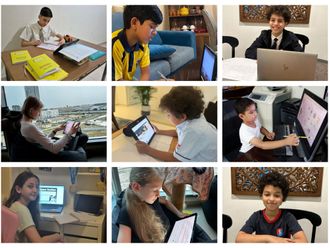
Dubai: Young Emiratis and their GCC counterparts reported increasingly ‘alarming’ levels of disengaged in the workplace - a drop of up to 10 per cent - a human resources study has shown. This trend posits dire consequences for regional economies if not curbed and addressed within three years, experts say.
The UAE’s youth employment and demographics have once again been thrust into the limelight after the recent release of a report by Aon Hewitt, the world-renowned consulting and outsourcing firm. In its Qudrat TM Research 2012 study, results showed increased levels of youth disengagement in the workplace.
“If these issues are not seriously addressed in the next three years, the entire region will lose out on the competitive advantage window it has for the next 10 years,” said Radhika Punshi, Project Director for Qudrat. “Obviously, youth unemployment and disengagement doesn’t just have implications for the world of work or education, it has other implications, mainly social and political, manifested in things like the Arab Spring.”
Qudrat means capabilities in Arabic and the 2012 study is the second part of a five-year research and analysis project. The study was independently funded by the human resources consulting firm and carried out with partners like TECOM Investments and the Abu Dhabi Tawteen Council
The first Qudrat GCC-wide study was conducted in 2011 using a sample of 4,600 employees from approximately 45 organisations. The 2012 GCC study was however widened, using a sample of 15,800 employees from more than 100 organisations and included candidates from the Egyptian market.
Early mid-life crisis
Among other things, work preparedness was a big factor for UAE youths. The youngest ‘products’ of the education system, literally one to three years out of university, said their education did not adequately prepare them for the world of work.
“We were expecting figures to show the older generation saying their education hadn’t adequately prepared them for work due to technological advancements, but it was the youngest group saying this,” she said. “That’s what’s leading to a sense of disengagement and a feeling amongst the youths of not being ready to contribute and faces the challenges at work.”
The second reason for increased youth disengagement at work is due to an increased restlessness in terms of career progression, the 2012 report showed.
“Employment for nationals in the region is concentrated in the public sector; but what’s happening is the public sector work culture engages the older generation, while the younger guys are frustrated with the slow pace,” she said. “It’s all about their expectations not being met, especially in the public sector.”
Workplace disengagement for the middle group, aged 25 to 34, is the highest due to what Punshi called an “early mid-life crisis”.
“Everywhere else in the world, we talk about a midlife crisis for the mid 30s-early 40s cohort,” said Punshi. “Our study shows the 25-to-34 year group, which is supposed to be the most productive and creative, is actually the least engaged, bringing forward the midlife crisis by an entire generation.”
This not only has a hard impact on the productivity of an organisation but also a soft one, which diminishes employee morale, with a trickle-down effect.
“This finding was much more specific for the nationals and wasn’t as prevalent in the expat group,” she added. “A lot of the younger nationals progress in organisations to middle and senior management much quicker than anywhere else in the world and they struggle at that level.”
The struggle happens because once a national joins an organisation, he is formally trained from anywhere between six months to two years due to national development programmes, added Punshi. “Then there are the leadership development programmes at a more senior level, but in between, there is a huge gap in terms of ongoing support and coaching, which leads to a sense of being lost.”
Solutions are available
Aon Hewitt also recently completed a survey of 2,500 university students in the UAE and will publish the findings at a later date about which, Punshi said: “We heard from the universities that career guidance is not well equipped. There are full-time career guidance counsellors at universities but they are not up-to-date with what’s happening in the market.”
The solution to stem these trends, she said, is to research and subsequently address the youth employment issues facing the region.
“At a country level not enough of this work-skills analysis is happening, which needs to be done over the next two decades, as well as increased collaboration between education and industry,” Punshi said. “However, to be fair, it’s happening across all emerging markets, so it’s not just a UAE problem. But it seems exaggerated because of demographics.”
With 60 per cent of the region’s population under the age of 25, the current youth bulge is predicted to continue until 2020. “The Middle East is unique in the sense in that it has the financial resources and the human capital to be very competitive in the future. This window of opportunity is until 2020 - within which time the the education-to-employment transition needs to be streamlined,” said Punshi. “If enough is not done quickly, the opportunity cost becomes more because we will have this entire cohort graduating, and reporting similar problems to what we are seeing in the study, again.”












